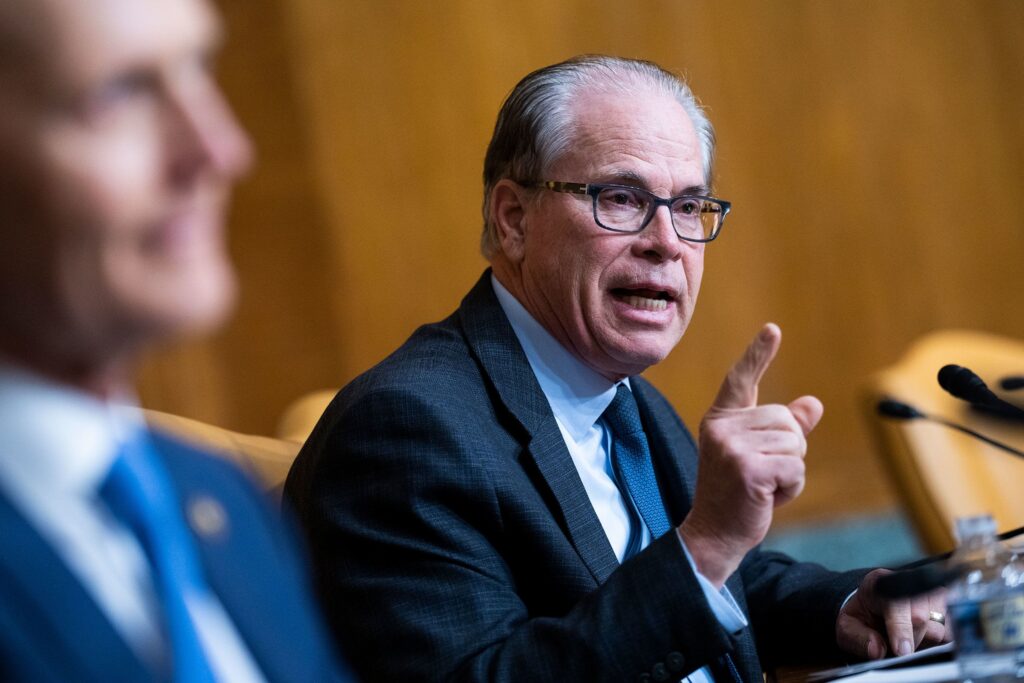
Montana Governor Greg Gianforte has signed a bill that prevents the production or sale of cultivated meat in the state, while Indiana has introduced a two-year prohibition.
From October 1, manufacturing or selling cultivated meat in Montana could put you at risk of imprisonment for up to three months, a fine of up to $250, or both.
The state became the fourth to pass legislation banning cultivated meat after Governor Greg Gianforte signed HB 401 into law on May 1.
Retailers that sell cultivated meat could face fines too, while restaurants could have their licences suspended. Additionally, even though it can’t be sold, the state has put a restriction on how cultivated meat can be marketed, preventing it from being “misbranded”.
And yesterday (May 6), Indiana Governor Mike Braun signed into law HB 1425, which establishes a two-year moratorium on the sale and manufacturing of cultivated meat and its labelling as a “meat product”.
It’s in effect from July 1 this year until June 30, 2027, and violators face fines up to $10,000, the highest of any other such ban in the US.
Montana attacks World Economic Forum after ban
— CAT HOLLEY
SAVE OUR BEEF
Our very own Braxton Mitchell (@BraxtonMT) passed a law to ban lab grown meat in #Montana. HB401
Well done Braxton and well done @GovGianforte for signing.
Way to deliver for Montana.#MTPol #MTNews #MTSen #MTLeg @MTGOP @MTHouseGOP @MTSenateGOP… pic.twitter.com/UUzfYix5Mb
(@lemmiwinkster) May 6, 2025
Montana’s anti-cultivated-meat bill was brought to the House floor in February by Representative Braxton Mitchell, who said at the time: “This bill will help promote the Montana agricultural industry and keep it strong and thriving in the state of Montana. I think we have a unique opportunity here to put the hammer down clearly and show that we stand with agriculture and that we stand with our cattle ranchers.”
The effort was co-sponsored by over 70 lawmakers, most of whom are Republican. “I have some grave concerns over the use and production of lab-grown meat,” Representative Randyn Gregg said during the first hearing.
“The process is a fusion of dystopia. One could call it Mary Shelley’s ‘Frankenstein’ meets Keanu Reeves in ‘The Matrix’,” he added, painting a vivid – if highly misleading – portrait of how cultivated meat is made. It’s not the first time someone has described cultivated meat as ‘Franken-food’, or a legislator has supported a ban based on wholly incorrect assumptions about the process.
The bill passed through both chambers without much fuss, with House Republicans unanimously voting in favour, outnumbering the opposition from Democrats for a final count of 64-35. In the Senate, the bill was voted 34-14 in favour, with five of the nays coming from Republicans. It was then transferred to Gianforte, who quietly signed it into law last week.
In announcing the bill’s success, Mitchell claimed the state was “punching back at the World Economic Forum’s plan to force the world to eat fake meat and bugs to achieve their authoritarian goals”.
It’s in reference to the organisation’s assertion that alternative proteins are necessary to help meet the needs of a population that will reach 10 billion in 2050 and combat the changing climate. Again, he isn’t the first lawmaker to attack the WEF as a means to justify a ban on cultivated meat.
Mitchell further added that the WEF “claims that our consumption of naturally grown meat is ‘the source of greenhouse gases and climate change’”. But the organisation is right. Livestock farming accounts for as much as a fifth of global emissions (10 times higher than aviation), while taking up 70% of our freshwater supplies and 80% of farmland.
Within the food system, nearly 60% of emissions come from meat and dairy production. In Montana, where there are twice as many cows as humans, agriculture is responsible for over a fifth of GHG emissions, with methane from cattle a major contributor. Cultivated meat, meanwhile, can have a 92% lower impact on climate change, and requires 95% less land and 78% less water than conventional beef.
Indiana temporarily bans sale and labelling of cultivated meat

In Indiana, HB 1425 was proposed by Representative Beau Baird, who indicated that cultivated meat was too new a product to be viewed as perfectly safe, and should be prohibited for two years as more studies are conducted.
“The US Department of Agriculture just approved this product in 2023, in the fall, so it’s still a relatively new product. I think that taking our time and making sure we know what our constituents are consuming is thoughtful and a wise decision,” he had said.
The bill also contains a provision that mandates manufacturers to label cultivated meat products with the phrase “This is an imitation meat product”, and outlaws labels that don’t “clearly indicate” that it is a cell-cultured product.
But the text actually defines cultivated meat as “animal protein grown in a facility from extracted animal stem cells and arranged in a similar structure as animal tissues to replicate the sensory and nutritional profiles of meat products”, so the labelling clause caused some confusion.
“We actually define ‘cultivated meat product’ in this bill, but then the label is going to say something different,” Senator Shelli Yoder said during one of the hearings.
Nevertheless, the bill passed with a 74-15 majority in the House, and 43-7 in the Senate, with Governor Braun signing it into law yesterday.
It makes Indiana the fifth state to officially ban cultivated meat from being sold within its borders, albeit this is a temporary measure.
Cultivated meat bans popular despite criticism

It’s almost becoming fashionable for states to attempt to ban cultivated meat, empowered by an administration that loves Big Meat and a cultural shift that has brought beef back to the centre of the plate.
Florida and Alabama introduced the first two bans in 2024. And in March, Mississippi’s bill to ban cultivated meat became official, passing both the House and the Senate unanimously (which eschewed the need for the governor’s sign-off).
More than 20 states have tried to do so over the last few years. In the current legislative session, South Dakota, South Carolina, West Virginia, Montana, Wyoming, and Georgia have all been mulling the move, while Nebraska is awaiting the governor’s sign-off.
But these efforts have been criticised by a multitude of stakeholders, including cattle farmers themselves. In a March 2024 letter sent to Florida Governor Ron DeSantis, the North American Meat Institute called the ban “bad public policy”.
“These bills establish a precedent for adopting policies and regulatory requirements that could one day adversely affect the bills’ supporters,” it said, emphasising the importance of consumer choice.
California’s Upside Foods, one of only three companies that have been approved by the FDA and the USDA to sell cultivated meat, has filed a lawsuit against Florida’s ban. Last week, a judge blocked the state’s attempt to throw out the case, paving its way towards the trial court.
Meanwhile, regulators cleared Mission Barns’s cultivated pork fat for sale earlier this year, the first green light for cultivated meat since Upside Foods and Good Meat’s summer 2023 approvals. It will debut at San Francisco restaurant group Fiorella and Sprouts Farmers Market.
The post ‘Frankenstein Meets The Matrix’: Montana & Indiana Become Latest US States to Ban Cultivated Meat appeared first on Green Queen.
This post was originally published on Green Queen.
